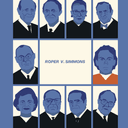
A recent article in the Michigan State Law Review examined the problem of racial bias in capital cases, particularly with respect to jurors’ decision making. Authors Mona Lynch and Craig Haney (pictured), both professors at the University of California, summarize past statistical studies on race and the death penalty and present new experimental research on juror decision-making in a simulated capital trial. Research participants were shown one of four simulated trial videotapes. The videos were identical except for the race of the defendant and the race of the victim. Participants who viewed the case with a black defendant were more likely to sentence the defendant to death, particularly in the scenario with a white victim. Participants’ questionnaires revealed that the jurors gave more weight to mitigating evidence when the defendant was white than when he was black, and were significantly more likely to improperly use mitigating evidence in favor of a death sentence when the defendant was black. The researchers noted, “We surmised that the racial disparities that we found in sentencing outcomes were likely the result of the jurors’ inability or unwillingness to empathize with a defendant of a different race — that is, White jurors who simply could not or would not cross the ‘empathic divide’ to fully appreciate the life struggles of a Black capital defendant and take those struggles into account in deciding on his sentence.”
The study emphasized the subconscious nature of racial bias and offered potential remedies. The authors concluded, “Short of outright abolition, of course, the challenge of overcoming racism in the administration of capital punishment will require a creative, decisive, and overarching set of remedies to be persistently pursued and conscientiously implemented. These remedies must be premised on what we now know about the nature and operation of modern racism, including the frank recognition that, contrary to prevailing legal wisdom, it is not solely a problem of conscious, motivated individual actors who engage in ‘purposeful discrimination.’ ”
(M. Lynch and C. Haney, “Looking Across the Empathic Divide: Racialized Decision Making on the Capital Jury,” 2011 Michigan State Law Review 573 (2011)). See Race and Studies. Listent to DPIC’s podcast on Race.



